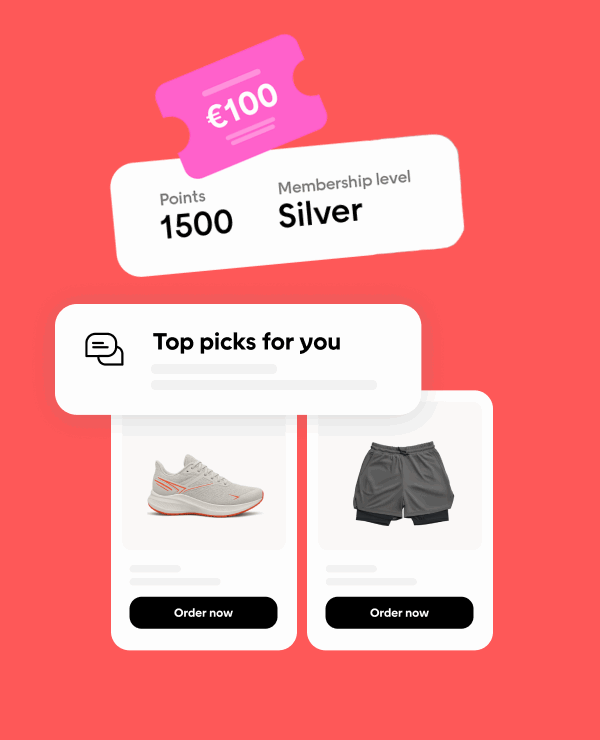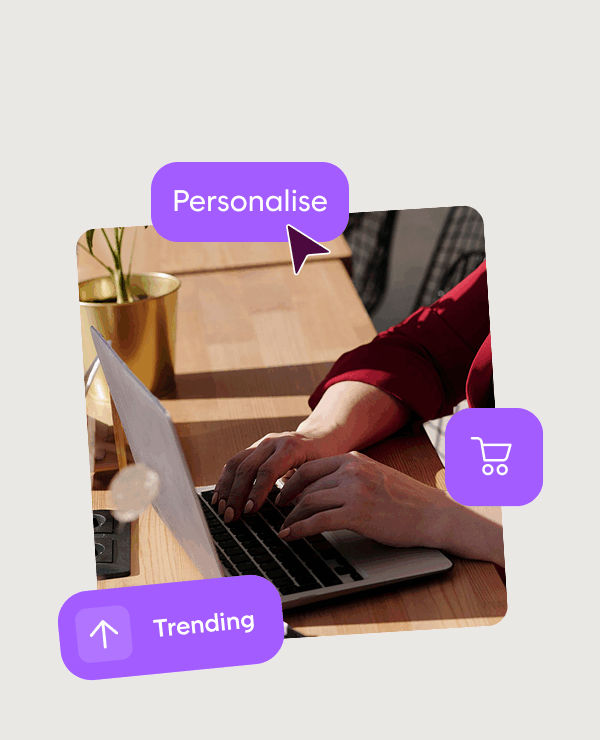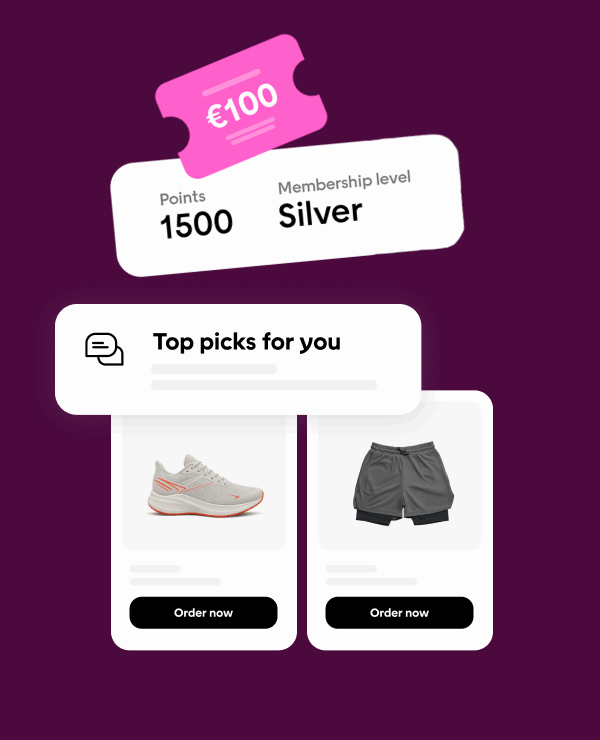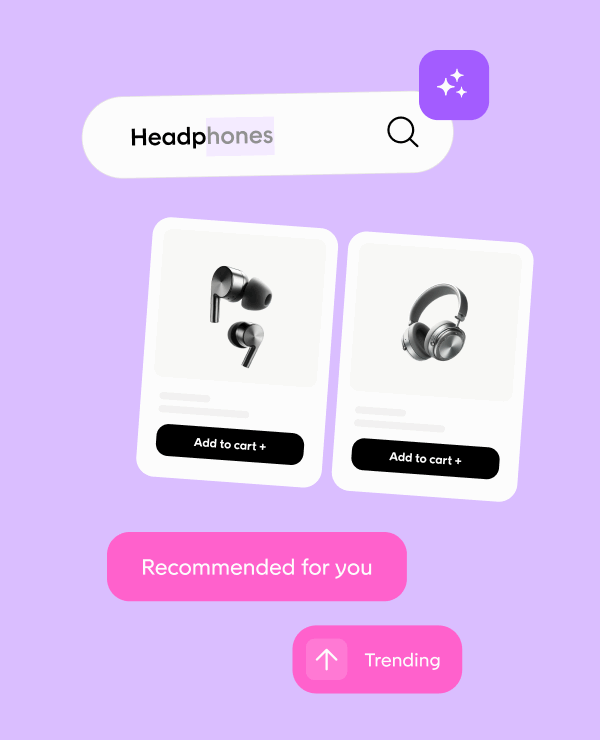TL;DR
Your 30-second summary:
- Retail personalization is no longer optional. Customers expect tailored experiences across every channel.
- First-party customer data is the foundation for delivering personalized interactions that build trust and loyalty.
- Retailers using modern personalization techniques see higher engagement, repeat customers, and stronger ROI.
- Retail Radar 2025 shows shoppers value loyalty programs, personalized rewards, and seamless online and in-store experiences.
- Continuous improvement in personalization efforts is key to staying ahead of customer expectations and cutting acquisition costs.
Personalization in retail has moved far beyond mass promotions and generic campaigns.
Your customers expect every interaction, whether online, in-store, or on mobile, to feel tailored to their preferences and behaviors.
Voyado’s Retail Radar 2025 confirms it: Shoppers want relevant shopping experiences, seamless loyalty programs, and rewards that reflect their individual needs.
Most retailers recognize this shift, but many are still struggling to connect data, tools, and strategies into a unified customer experience.
We’ll break down the key layers of modern personalization.
From using first-party data to building loyalty through personalized rewards, you will see how leading retailers are meeting customer expectations and setting new standards for customer engagement.
Why personalization in retail matters today
Customer expectations have never been higher. Shoppers no longer settle for one-size-fits-all offers. They want every interaction to feel relevant and personal.
Retail Radar 2025 highlights this shift across Europe:
- 51% of UK consumers now belong to a loyalty program and expect value beyond discounts.
- 53% of German shoppers are part of a loyalty scheme, and personalization is seen as an expectation, not a bonus .
- 42% of Dutch consumers are loyalty program members, and 73% actively search for promotions before buying .
- In the Nordics, 440 million transactions showed steady growth for retailers that invested in personalization and loyalty strategies .
Why this matters for your business:
- Personalized interactions increase customer satisfaction and build brand loyalty.
- Data-driven personalization efforts cut customer acquisition costs and improve retention.
- A unified customer experience across online, in-store, and mobile creates stronger engagement and more repeat customers.
Retailers that act now are positioning themselves as leaders. Those who delay risk losing relevance as customer needs and expectations keep evolving.
First-party data as the foundation of retail personalization
Personalization in retail starts with customer data. Without accurate insights, marketing efforts turn into guesswork.
With the right data in place, your business can deliver personalized interactions that feel seamless and relevant.
A strong customer data platform (CDP) connects all consumer data in one place. This gives your marketing team a comprehensive understanding of:
- Purchase history and past purchases
- Customer preferences and individual customer profiles
- Customer interactions across email, mobile apps, ecommerce sites, and in-store
- Real-time data that reflects current customer behavior
Why does this matter?
- Retailers that unify their customer journey through a CDP can deliver personalized messages at the right time.
- A personalization engine powered by first-party data makes it possible to segment customers, predict behavior, and recommend personalized promotions.
- Instead of mass promotions, you can target customers with tailored shopping experiences that increase customer satisfaction and loyalty.
JACK & JONES used first-party data to build a unified customer experience across online and in-store shopping, increasing their average order value by 33%.
Retail Radar 2025 data reinforces this:
Most retailers recognize the need to act on first-party data to cut customer acquisition costs and build long-term loyalty.
Customers expect companies to know their needs, and those who fail to act risk losing engagement and repeat customers.
With a strong foundation of first-party data in place, the next step is to turn insights into action.
Modern personalization techniques and strategies help retailers use this data to create personalized experiences that drive engagement and loyalty.
Modern personalization techniques and strategies
Once you have the right customer data in place, the challenge is turning insights into action. Most retailers recognize that personalization in retail is no longer optional. It is what keeps customer engagement high and loyalty growing.
Retail personalization strategies now go far beyond generic mass promotions. Leading retailers use:
- Personalized promotions based on past purchases and customer preferences
- Personalized messages across email, SMS, and mobile apps
- Personalized rewards that strengthen loyalty program engagement
These personalization efforts create a unified customer experience that feels consistent in-store, online, and on mobile apps.
Technology makes this possible.
A personalization engine powered by artificial intelligence and machine learning can segment customers, deliver personalized recommendations in real time, and adapt to ongoing customer interactions.
With predictive analytics and online data, marketing teams can continuously refine the personalization process to improve the overall retail experience.
POWER A/S grew customer engagement by 300% by building automations such as expiring reward reminders and price-drop triggers.
Retail Radar 2025 confirms why these strategies pay off:
- In Germany, 53% of shoppers in loyalty programs expect companies to deliver personalized experiences.
- In the UK, 73% of Gen Z shoppers regularly search for deals, making a tailored shopping experience critical for conversion.
- In the Netherlands, 42% of consumers now belong to a loyalty program, showing the value of personalized rewards that enhance customer loyalty.
If you want to go deeper, our blog on retail personalization software covers the best tools available today. You can also learn how to build a 360 customer view in retail to connect data into a unified customer journey.
Modern personalization techniques set the stage, but loyalty programs are where retailers see those efforts pay off.
By turning personalized interactions into long-term relationships, brands can strengthen retention and keep customers coming back.
Loyalty programs as a driver of retention
Personalization efforts are most powerful when they connect directly to loyalty.
Shoppers expect companies to recognize their needs and reward their engagement, which makes loyalty programs a critical layer in modern personalization.
Why loyalty programs matter
Retail Radar 2025 shows just how widespread they are:
- 51% of UK shoppers are now members of at least one loyalty program .
- 53% of German consumers belong to a loyalty scheme .
- 42% of Dutch shoppers are active members.
For most retailers, this is no longer only the beginning.
Loyalty program members are often the most engaged customers, driving higher purchase frequency, repeat customers, and lower customer acquisition costs.
Personalized rewards build engagement
Generic discounts are not enough to enhance customer loyalty. Customers expect personalized rewards that feel relevant to their shopping habits. This could mean:
- Bonus points tied to past purchases
- Exclusive access to personalized promotions
- Tailored shopping experiences that match individual customer preferences
LAKRIDS BY BÜLOW boosted loyalty by integrating online and offline experiences, with 50% of in-store customers now identified as loyalty members.
By moving away from mass promotions, retailers like you can deliver personalized engagement that keeps loyalty program members active and strengthens brand loyalty.
Connecting loyalty with the full customer journey
Strong loyalty programs go beyond transactions. They connect customer interactions across online retail personalization, in-store purchases, and mobile apps.
This creates a unified customer experience that reinforces customer satisfaction and increases long-term retention.
For more guidance on how to shape a winning approach, check out our blog on retail personalization strategies.
Loyalty programs prove how powerful personalization can be, but the work does not stop there.
To stay ahead of customer expectations, retailers need a process of continuous improvement that keeps personalization strategies relevant and effective.
Continuous improvement in personalization efforts
Personalization in retail is not a one-time project. Customer needs evolve, and so should your personalization strategies.
Retailers that focus on continuous improvement are better positioned to meet customer expectations and deliver long-term value.
Why ongoing optimization matters
Retail Radar 2025 shows that most retailers recognize the importance of adapting to change.
Shoppers are more data-savvy than ever and expect companies to use customer data responsibly to create personalized experiences.
Retailers that fail to adapt risk losing engagement and repeat customers.
Data-driven personalization at scale
A key part of continuous improvement is using real-time data to refine personalization strategies. This includes:
- Tracking customer behavior across the entire customer journey
- Updating personalization engines with new consumer data
- Applying predictive analytics to deliver personalized recommendations and messages
Björn Borg enhanced engagement by combining ratings and reviews with personalized marketing automation. The result was higher open rates, more customer feedback, and stronger insights that fuel ongoing improvement.
By relying on data-driven personalization, your marketing team can deliver personalized interactions that evolve with each customer’s needs.
Building a culture of personalization
Continuous improvement requires more than technology. It means creating a marketing strategy that prioritizes personalized engagement across all channels. This helps retailers:
- Align marketing efforts around customer needs
- Strengthen customer satisfaction and brand loyalty
- Cut customer acquisition costs while improving customer retention
Retailers that treat personalization as an ongoing process, not a campaign, will continue to create relevant shopping experiences that stand out in a crowded market.
Your next steps: Turning personalization into lasting growth
Personalization in retail is more than a trend. It is the foundation for customer satisfaction, loyalty, and long-term growth.
By building on first-party data, applying modern personalization strategies, and strengthening loyalty programs, you can create a unified customer experience that keeps shoppers engaged.
The key is to view personalization as a continuous process.
Every customer interaction is an opportunity to learn, refine, and deliver more relevant shopping experiences.
Retailers who commit to ongoing improvement will not only meet customer expectations but also cut acquisition costs and build stronger brand loyalty.
What you can do to get started with personalization in retail
- Unify your customer data in a customer data platform to create a 360-degree view.
- Apply modern personalization strategies such as personalized promotions, messages, and rewards.
- Strengthen your loyalty program with personalized rewards that reflect customer preferences.
- Commit to continuous improvement by tracking customer behavior and refining personalization efforts in real time.
If you are ready to put these steps into practice, we can help. Book a demo and see how Voyado makes it easier to deliver personalization that keeps customers coming back.
FAQs
What is retail personalization?
Retail personalization is the process of using customer data to deliver personalized interactions, promotions, and experiences across online, in-store, and mobile channels. The goal is to create a relevant shopping experience that improves customer satisfaction and loyalty.
Why is first-party data important for personalization in retail?
First-party data gives retailers a comprehensive understanding of customer behavior, preferences, and purchase history. Unlike third-party data, it is more accurate, cost-effective, and privacy-compliant, making it the foundation for effective personalization strategies.
How can personalization efforts improve customer loyalty?
Personalized messages, promotions, and rewards make customers feel recognized as individuals. This builds stronger emotional connections, increases repeat customers, and enhances brand loyalty over time.
What are examples of modern personalization techniques?
Modern personalization techniques include personalized promotions based on past purchases, predictive analytics to anticipate customer needs, and personalization engines that deliver recommendations in real time.
Can personalization help cut customer acquisition costs?
Yes. By tailoring marketing efforts to individual customers, retailers reduce wasted spend on mass promotions. This improves conversion rates, boosts customer retention, and lowers customer acquisition costs.










